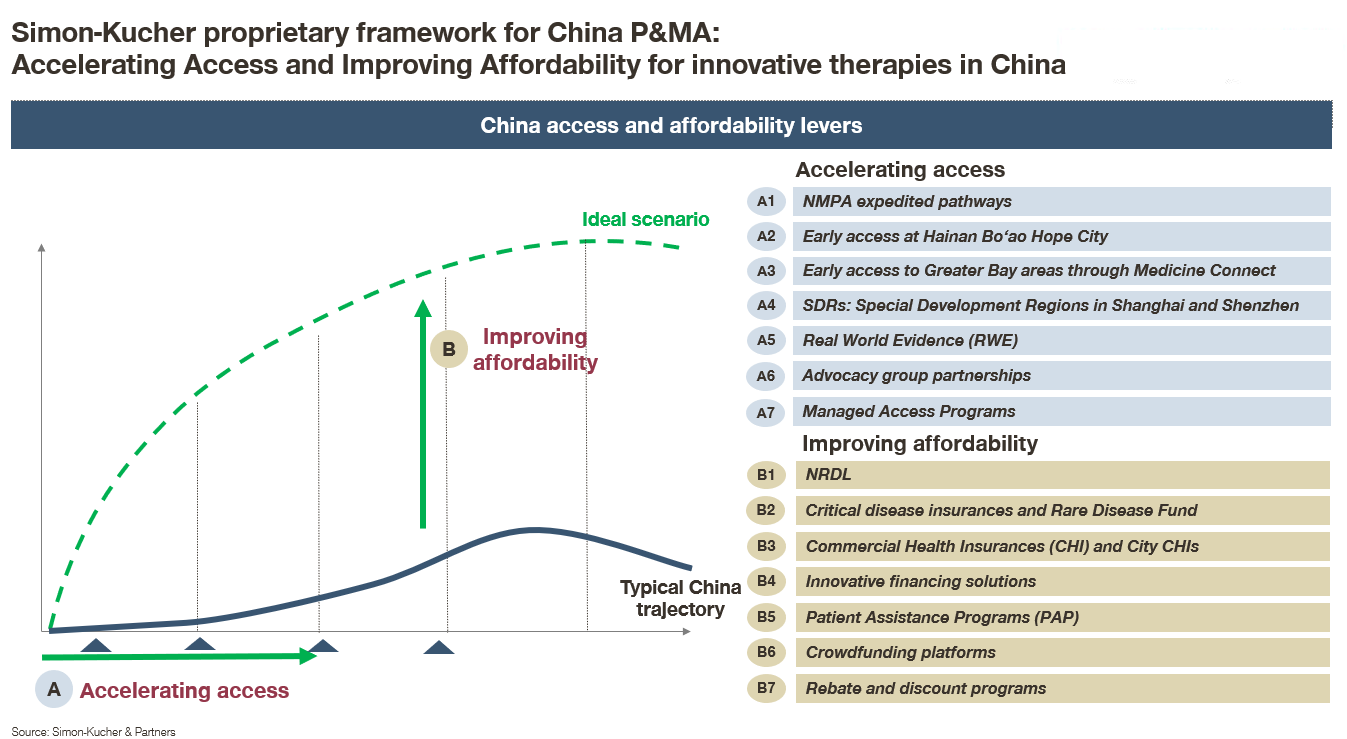3 Steps to Navigate Rare Disease Market in China
The rare disease market in China can be summed up in three words: Exciting, challenging, and fast evolving. As such it’s quite a complicated space that requires a careful and strategic approach. In this article experts from Simon-Kucher discuss how best to navigate this landscape to reap the many opportunities available.
Bruce Liu

Rare diseases in China are benefitting from encouraging policies and infrastructure improvements
Policies regarding rare diseases have become increasingly progressive and supportive in China. Specific measures have been put in place to encourage R&D, accelerate approvals, improve diagnosis and treatment standards, as well as import and reimbursement.
In fact, due to the Implementation Plan of China’s Drug Administration Law newly released in May 2022, first-in-class rare disease therapies are expected to enjoy seven-year market exclusivity–in line with the US.
At the same time, infrastructure for rare disease care has been improving rapidly over the past five years. There’s now a collaborative network of 324 leading hospitals focusing on rare diseases, with Peking Union Medical College Hospital as the leading national flagship and 32 provincial hospitals as regional hubs.
The network is also the driving force behind the National Rare Diseases Registry System, now covering around 200 cohorts with 70,000 patients across China. This is no small feat, but still a long way to go given the official estimate of the number of rare disease patients in China–over 20 million.
Despite this, rare disease therapies still face several hurdles
In stark contrast to the uptake curve for innovative therapies in many markets, a typical trajectory in China features much slower initial uptake. Moreover, it’s impeded by speed bumps like provincial tendering, hospital formulary listing, prescription constraints, and affordability challenges.
For rare disease therapies, uptake is further constrained by gaps in disease awareness, diagnosis, and treatment expertise. Not to mention the dispersed patient population and the typically high price tags, further limiting access to patients in need.
To address these challenges, some have explored public reimbursement like the National Reimbursement Drug List (NRDL) but are often alarmed by the magnitude of price concession in some precedents. Others have been looking into commercial payers and out-of-pocket options, while daunted by the complexities and operational challenges.
Innovative therapies can take advantage of China’s market access
Indeed, China’s access environment is vibrant with a broad range of new levers emerging for rare disease therapies to accelerate access and improve affordability.

There are increasing opportunities to explore early access via Hainan, the Great Bay Area, as well as Special Development Zones like Shanghai and Shenzhen. These afford clinical utilizations locally prior to formal regulatory approval.
More importantly, real-world evidence (RWE) collected during early access programs will help accelerate eventual approval. In fact, some innovative therapies have gone through this process and succeeded–like pralsetinib and Yutiq.
Yutiq, in particular, received National Medical Products Administration approval in June 2022 for the treatment of noninfectious posterior uveitis, with its China data based solely on a real-world study conducted in Hainan.
Moreover, the NRDL is becoming more inclusive for rare disease therapies. Seven innovative therapies like Replagal, Firazyr, Spinraza, Ampyra, and Vyndamax were included in the 2021 NRDL. Furthermore, the creation of a separate category for rare disease in the 2022 NRDL is an encouraging sign. 19 rare disease therapies have passed this year’s formal review and made to the long list.
Besides NRDL coverage, a range of affordability levers have emerged. These include commercial health insurances (CHI), innovative financing solutions, as well as charities, rare disease funds, patient assistance programs, crowdfunding platforms, and rebate programs. Most notable among which is the city CHI, which has mushroomed from a handful of cities to around 200. Currently, it covers 100 million people, with rare disease as one of the key focus areas for many formularies.
High priced therapies like Replagal, Spinraza, Cerezyme, and Myozyme have all taken advantage of the different combination of levers for several reasons. Either as a stepping stone to NRDL inclusion, or as a self-sustaining access strategy independent of the NRDL, or even a mixture of the two at different stages of their lifecycles.
However, it’s important to note that every lever has its sweet spot and limitations. NRDL listing typically comes with steep price cuts, city CHIs afford only fragmented access, and rare disease funds at provincial level have been reined back, while the national one is yet to be unveiled. This reflects the dynamic developments occurring in China in this space.
In this context, there are three crucial steps towards a successful China strategy:
- Adopt a patient-first mindset: An in-depth understanding of the unmet needs of patients in China is crucial to success. These insights also help identify best access levers and provide vital input to China-fit trial design and development decisions at square one.
- Systematically map different access and affordability levers: Some levers and options may not be suitable for all diseases and assets and may become distractions rather than solutions. Others might be better suited but take time and effort to gain traction. As such, a systematic mapping of different levers would help assess the attractiveness and fit of each and help prioritize and sequence them in a coherent and synergistic way.
- Utilize a forward-looking lens: China’s rare disease market is constantly changing. While this makes it an exciting area to work in, it requires forward-thinking. Successfully adopting such a lens affords opportunities to change lives, capture growth, and shape the market as it evolves.
About the authors:
Bruce Liu leads Simon-Kucher’s Life Sciences practice in Greater China; Ivy Jiang is a senior consultant focusing on China commercialization strategy for rare diseases and innovative therapies; Selene Peng and Duo Xu are consultants with extensive experience in China market access and growth strategy.
2 Commerce Drive
Cranbury, NJ 08512
All rights reserved.